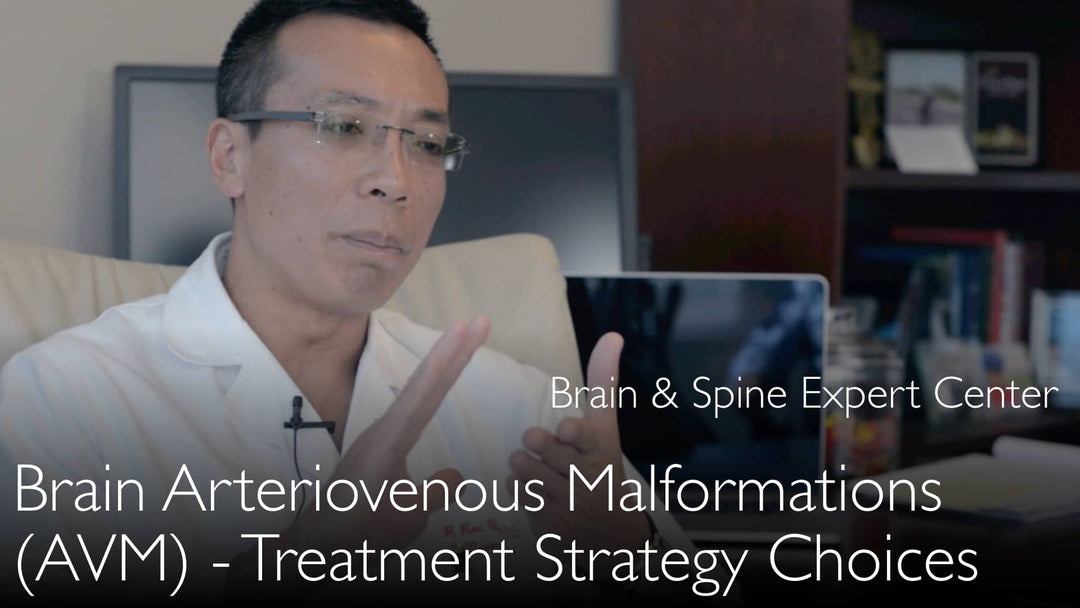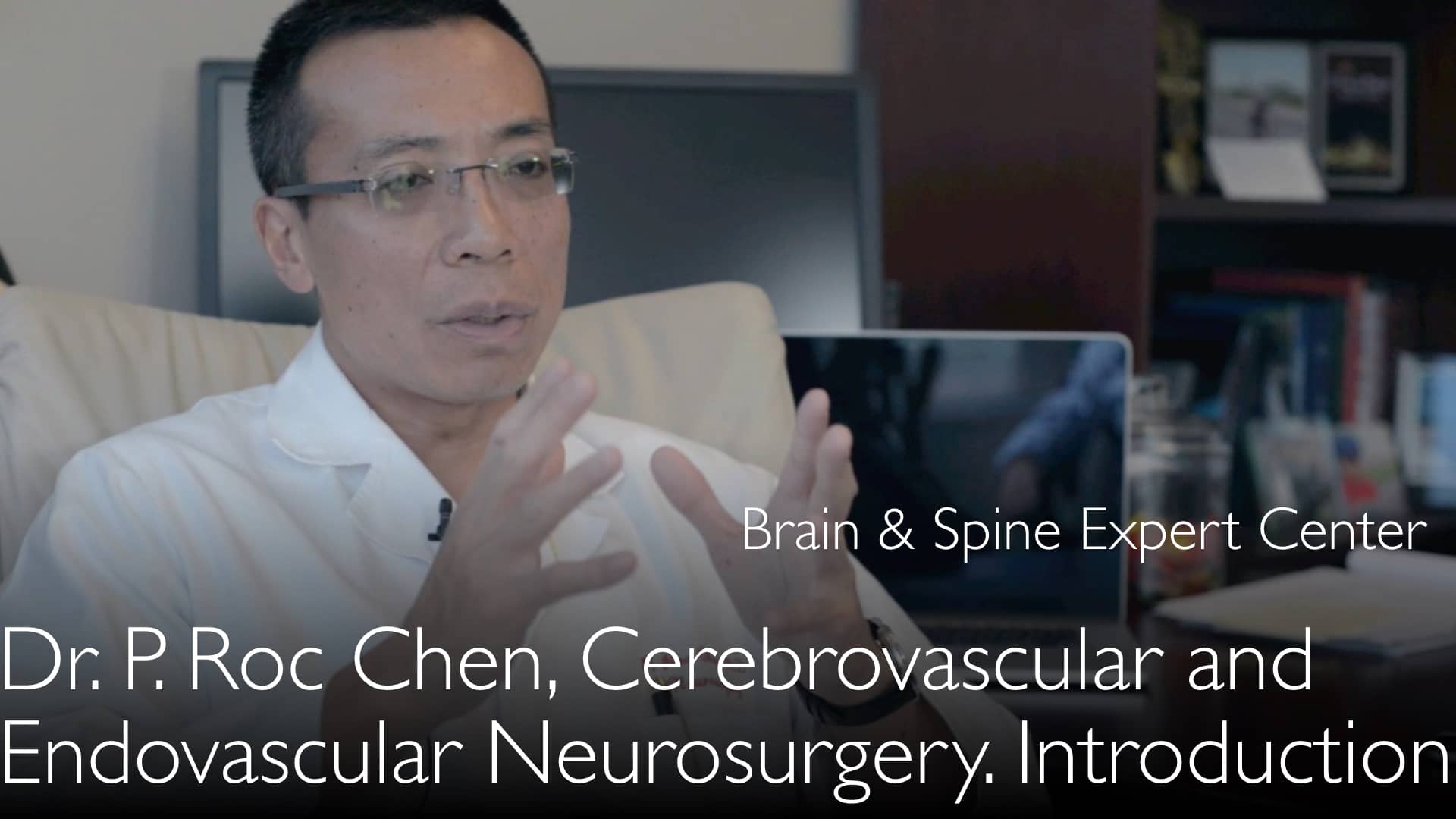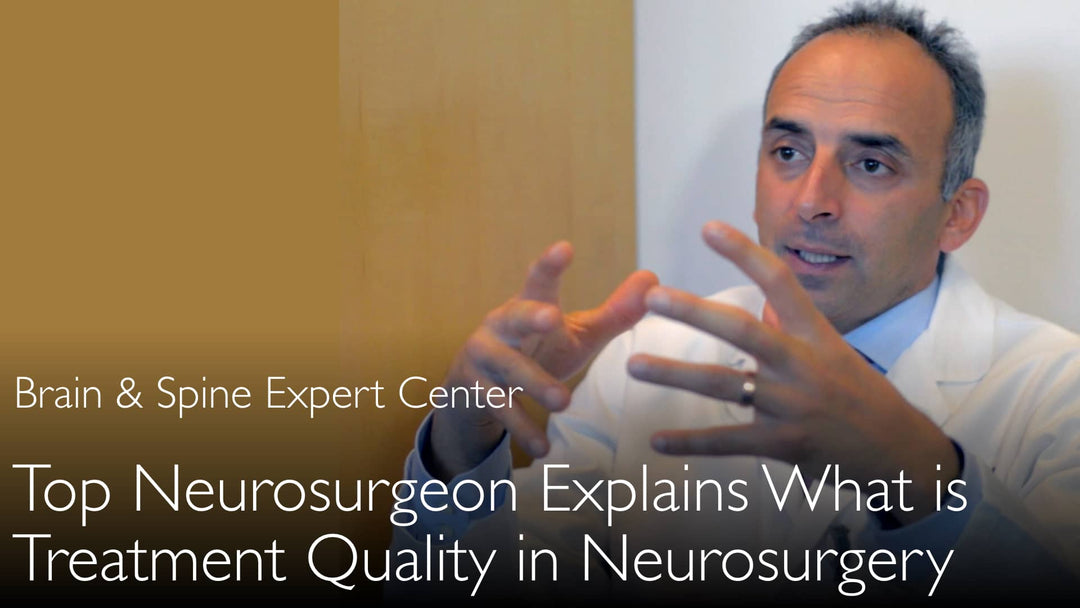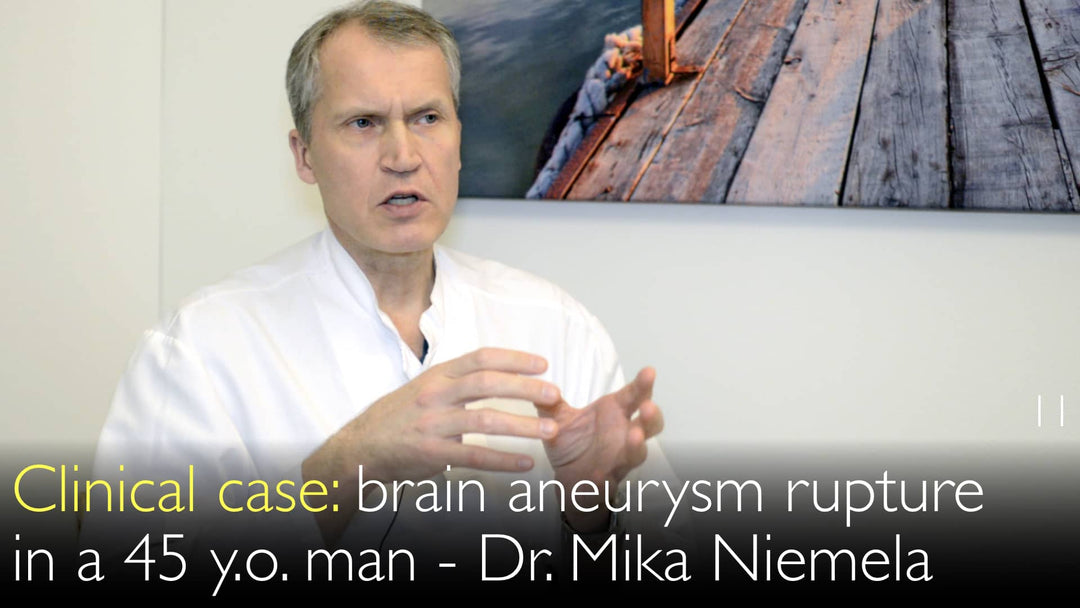Dr. Peng Chen, a leading expert in cerebrovascular neurosurgery, explains the complex decision-making involved in treating brain arteriovenous malformations. He details how treatment strategy depends on the AVM’s location, size, and rupture history, advocating for a multidisciplinary team approach that combines endovascular embolization and open brain surgery for optimal outcomes. Dr. Chen clarifies that the annual bleeding risk for unruptured AVMs is 1–4%, while the risk of rebleeding is significantly higher—4–7% per year—after an initial rupture.
Modern behandling av hjärnans arteriovenösa malformationer (AVM)
Hoppa till avsnitt
- Vad är en hjärn-AVM?
- Årlig blödningsrisk vid AVM
- Behandlingsrisker kontra fördelar
- Behandling av associerade aneurysmer
- Behandling av rupturerad AVM
- Multidisciplinärt behandlingsförhållningssätt
- Observation kontra intervention
Vad är en hjärn-AVM?
Hjärnans arteriovenösa malformationer är en typ av cerebrovaskulära skador med onormala förbindelser mellan artärer och vener. Dr. Peng Chen, MD, beskriver tre huvudtyper. Den första är en medfödd högflödes-AVM som uppstår under fosterutvecklingen och bildar ett plexiformt nätverk av felaktiga kärlförbindelser.
Den andra typen är en durální arteriovenös fistel, som ofta utvecklas under livet, möjligen på grund av venös trombos. Den tredje är en kavernös malformation, eller kavernom, som inte syns på vanlig kärlavbildning men kan upptäckas med MR- och DT-undersökningar och orsakar ofta små blödningar.
Årlig blödningsrisk vid AVM
Risken för att en hjärn-AVM ska brista och orsaka en blödning är avgörande vid behandlingsbeslut. Enligt Dr. Peng Chen, MD, är den årliga blödningsrisken för en orupturerad hjärnartärenös malformation vanligtvis mellan 1 % och 4 %. Denna risk varierar dock och beror starkt på AVM:ens specifika egenskaper.
Dr. Peng Chen, MD, förklarar att rupturrisken påverkas av storleken och geometrin hos de vaskulära kanalerna inuti malformationen. Han noterar att mycket stora AVM:er, klassificerade som Spetzler-Martin grad 4 eller 5, faktiskt kan ha en lägre rupturrisk än tidigare antagits, potentiellt under 1 % per år, särskilt när risken från associerade aneurysmer bedöms separat.
Behandlingsrisker kontra fördelar
Att väga behandlingsriskerna mot den naturliga blödningsrisken är centralt vid hantering av hjärnans arteriovenösa malformationer. Dr. Peng Chen, MD, betonar att riskerna med aggressiv kirurgi eller endovaskulär behandling av stora AVM:er ibland kan överstiga risken för spontan ruptur. Denna insikt har lett till ett mer avvaktande förhållningssätt i vissa komplexa fall.
Å andra sidan påpekar Dr. Chen att mindre AVM:er ofta har en högre relativ blödningsrisk. När dessa ligger i icke-funktionskritiska områden av hjärnan kan behandling utföras med stor säkerhet. I dessa fall överskrider fördelen med att eliminera framtida blödningsrisk procedurriskerna, vilket gör intervention till det föredragna alternativet.
Behandling av associerade aneurysmer
Patienter med hjärnans arteriovenösa malformationer kan utveckla associerade aneurysmer på grund av år av onormalt högtrycks blodflöde. Dr. Peng Chen, MD, framhåller att dessa hjärnaneurysmer i sig medför en betydande risk för blödning. Denna komplikation kräver särskild uppmärksamhet vid utvärdering av patienten.
Behandlingsstrategin fokuserar ofta på att ta itu med aneurysmen först. Dr. Peng Chen, MD, noterar att dessa aneurysmer ofta kan behandlas framgångsrikt med endovaskulära metoder, som är mindre invasiva än öppen kirurgi. Att hantera aneurysmen separat är ett avgörande steg för att minska patientens totala blödningsrisk.
Behandling av rupturerad AVM
Behandlingsstrategin förändras avsevärt efter att en hjärnans arteriovenös malformation har rupturerat. Dr. Peng Chen, MD, konstaterar att risken för återkommande blödning är mycket högre, från 4 % till 7 % per år. Denna förhöjda risk innebär att patienter med en rupturerad AVM generellt behöver någon form av behandling för att förhindra ytterligare blödning.
Principerna för behandling av en rupturerad AVM bygger på samma modaliteter—kirurgi, embolisering och radiokirurgi. Men brådskan och behovet av fullständig obliteration är större. Beslutsprocessen förblir komplex, särskilt om AVM:en ligger i ett funktionskritiskt område.
Ofullständig eller partiell behandling av patienter med orupturerad hjärn-AVM är inte optimal. En kombination av endovaskulär embolisering och öppen hjärnkirurgi är att föredra framför en enskild metod. Läkare bör använda en multidisciplinär teamansats.
Kirurger måste noggrant utarbeta en detaljerad behandlingsplan för hjärnartärenös malformation innan någon behandling inleds. För rupturerade AVM:er är risken för återruptur betydligt högre, med en årlig risk för återkommande hjärnblödning på 4–7 %. Därför kräver patienter med rupturerad hjärn-AVM vanligtvis behandling.
Behandlingsprinciperna för rupturerade hjärnartärenösa malformationer är desamma som för orupturerade. Om AVM:en ligger i ett mindre kritiskt område kan öppen hjärnkirurgi vara ett alternativ.
Om AVM:en däremot ligger i en funktionskritiskt del av hjärnan blir behandlingsbeslutet mer komplext och utmanande. Neurokirurger, endovaskulära specialister och radiokirurger måste då gemensamt besluta om hur malformationen ska oblitereras utan att skada viktiga hjärnfunktioner.
Detta representerar den nuvarande standarden för vår behandlingsmetodik av cerebrala arteriovenösa malformationer. Frågor som observation kontra intervention, endovaskulär embolisering kontra öppen kirurgi, och framsteg inom AVM-behandling är centrala i denna diskussion.








